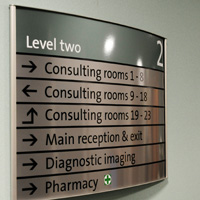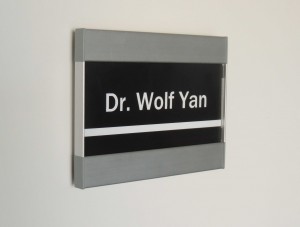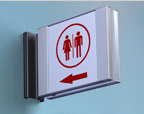It’s sometimes intimidating trying to find the ideal office signs for your business given the amount of options from which to choose. You first have to pick the right sign frames and then you have to decide what type of inserts to use. I thought I would take some of the more frequently ordered signs and briefly describe why I believe most people tend to gravitate towards them. I’ll also take a few minutes afterwards to talk about Vista System office signage in general, including the features common across the entire product line which may help further explain why customers like these particular sign frames.
- WFFP2U – Dimensions 3″H x 5.25″W.
- WFFP16U – Dimensions 6″H x 6″W
- WFFP17U – Dimensions 6″H x 6″W with a 2″ ADA header
- WFP1U – Dimensions 2″H x 4″W
- WFP84U – Dimensions 11″H x 8.5″W
The WFFP2U is the smallest and most economical of the flat product line. The WFFP16U sign frame is one of the more popular office signs because it’s ideally sized for insert content with an attractive price point. The WFFP17U is identical to the 16U but is a two-part sign frame with a two-inch ADA header. The flat portrait office signs in general have become increasingly popular for the above reasons.
The WFP1U is the most cost effective of the office door signs. Unlike the other three listed so far, the WFP1U is from the curved product line. Since the curved line is LEED certified I believe this may be another contributing factor to the curved line popularity. Finally, the WFP84U sign frames accommodate 8.5 x 11 letter-size inserts which make it an ideal solution for people who like to do-it-yourself.
Overall I believe people choose office signs from Vista System because they are competitively priced, aesthetically pleasing and most importantly, are extremely easy to maintain. There are others too but maintaining your office door signs, for example, can be very costly downstream due to promotions, attrition, etc. By using paper inserts you can print new office door signs in minutes for a fraction of the cost of having to call your local sign company.
If you would like a free sample please let us know and we’ll send you one just for the asking. We value your business and opinions so please comment on our blog or any of our other social channels.




